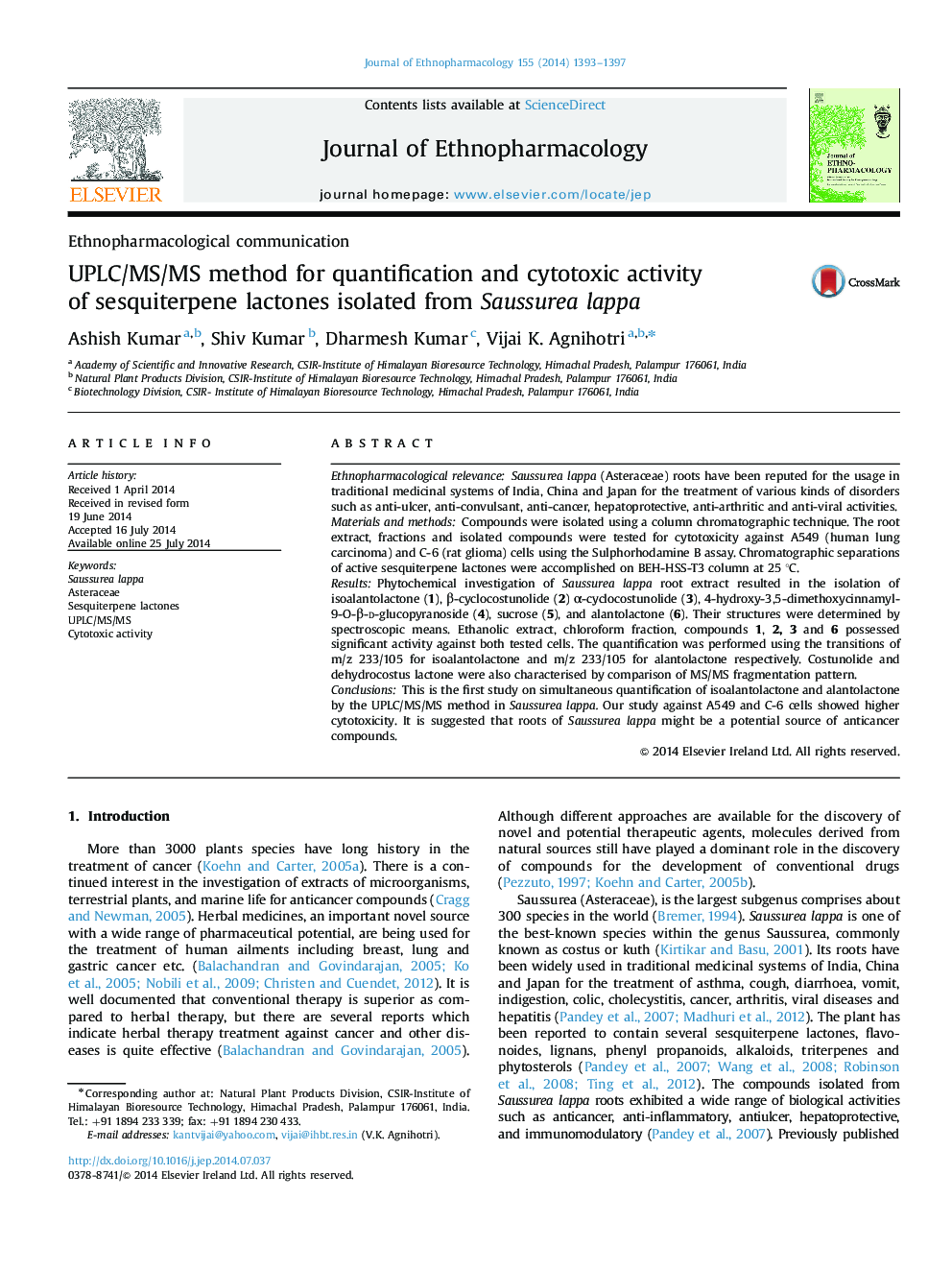| Article ID | Journal | Published Year | Pages | File Type |
|---|---|---|---|---|
| 5836167 | Journal of Ethnopharmacology | 2014 | 5 Pages |
Ethnopharmacological relevanceSaussurea lappa (Asteraceae) roots have been reputed for the usage in traditional medicinal systems of India, China and Japan for the treatment of various kinds of disorders such as anti-ulcer, anti-convulsant, anti-cancer, hepatoprotective, anti-arthritic and anti-viral activities.Materials and methodsCompounds were isolated using a column chromatographic technique. The root extract, fractions and isolated compounds were tested for cytotoxicity against A549 (human lung carcinoma) and C-6 (rat glioma) cells using the Sulphorhodamine B assay. Chromatographic separations of active sesquiterpene lactones were accomplished on BEH-HSS-T3 column at 25 °C.ResultsPhytochemical investigation of Saussurea lappa root extract resulted in the isolation of isoalantolactone (1), β-cyclocostunolide (2) α-cyclocostunolide (3), 4-hydroxy-3,5-dimethoxycinnamyl-9-O-β-d-glucopyranoside (4), sucrose (5), and alantolactone (6). Their structures were determined by spectroscopic means. Ethanolic extract, chloroform fraction, compounds 1, 2, 3 and 6 possessed significant activity against both tested cells. The quantification was performed using the transitions of m/z 233/105 for isoalantolactone and m/z 233/105 for alantolactone respectively. Costunolide and dehydrocostus lactone were also characterised by comparison of MS/MS fragmentation pattern.ConclusionsThis is the first study on simultaneous quantification of isoalantolactone and alantolactone by the UPLC/MS/MS method in Saussurea lappa. Our study against A549 and C-6 cells showed higher cytotoxicity. It is suggested that roots of Saussurea lappa might be a potential source of anticancer compounds.
Graphical abstractDownload high-res image (194KB)Download full-size image
